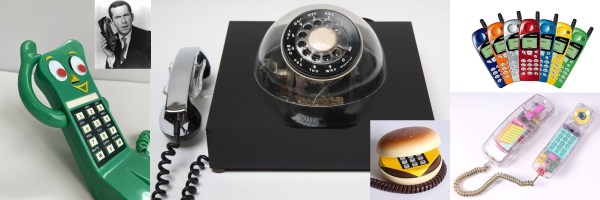Long before the idea of hot dog-shaped iPhone cases, Otter Boxen, or even those swappable Nokia face plates, people were just as likely to express themselves with their landline phones. Growing up at my house in the 80s, the Slimline on the kitchen wall was hidden inside a magneto wall set from the early 1900s, the front of which swung out to reveal the modern equipment behind it. Back in my bedroom, I had the coolest phone ever, a see-through Unisonic with candy-colored guts. Down in the basement was my favorite extension, tactility-wise: a candy apple-red wall unit with dimly-lit circular push buttons that were springy and spongy and oh-so fun to dial.
Popular culture shows us that people were dreaming of cool telephone enclosures before they were even a thing. Obviously, TV secret agent Maxwell Smart’s shoe phone wasn’t plausible for the technology of that era, but it also wasn’t really feasible for aesthetic reasons. For decades, phone subscribers had to use whatever equipment Ma Bell had to offer, and you couldn’t just buy the things outright at the mall — you had to lease the hardware from her, and pay for the service.











